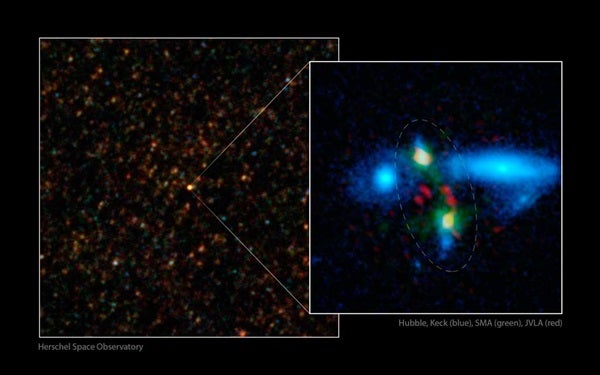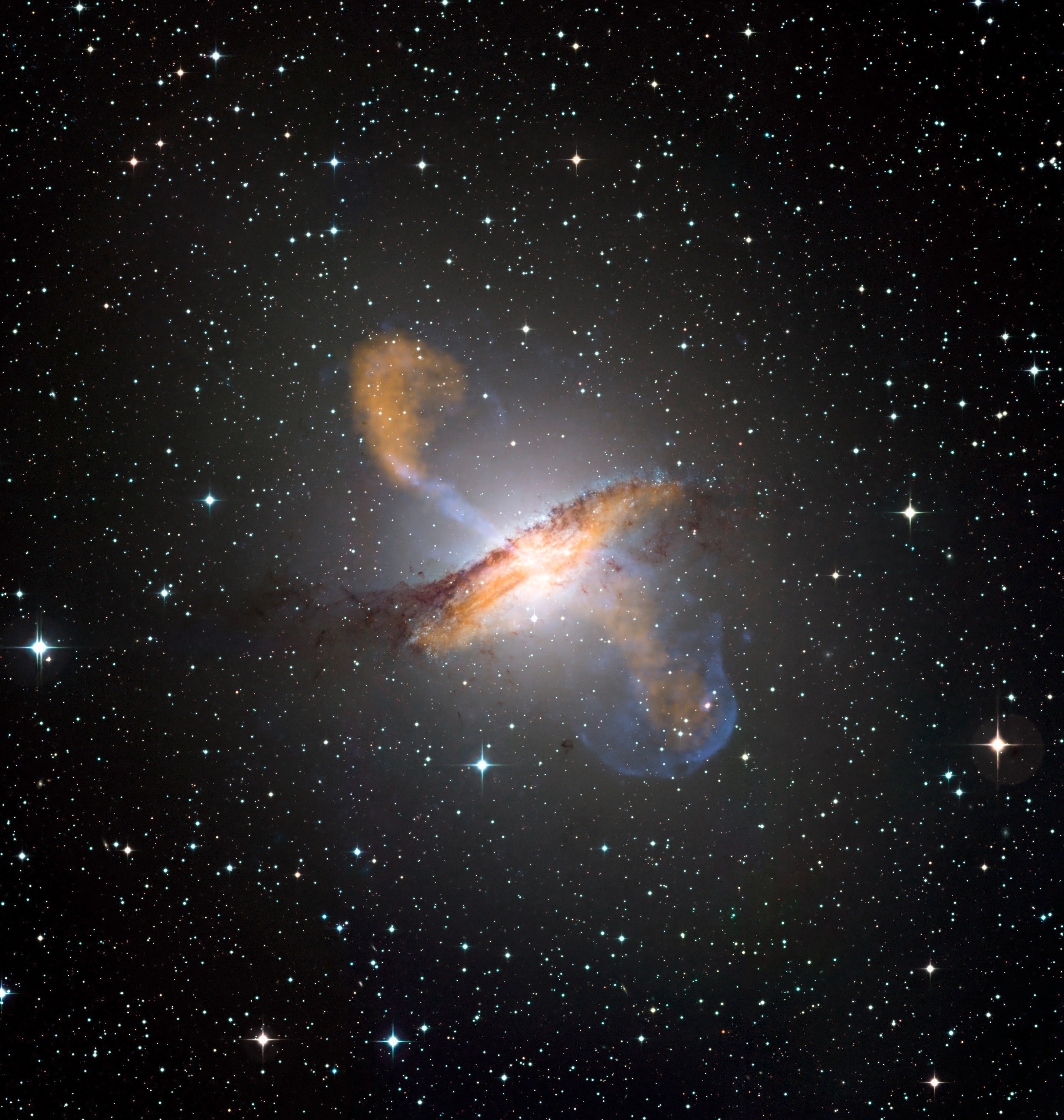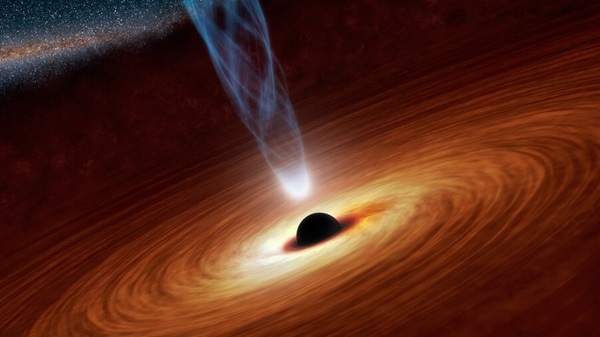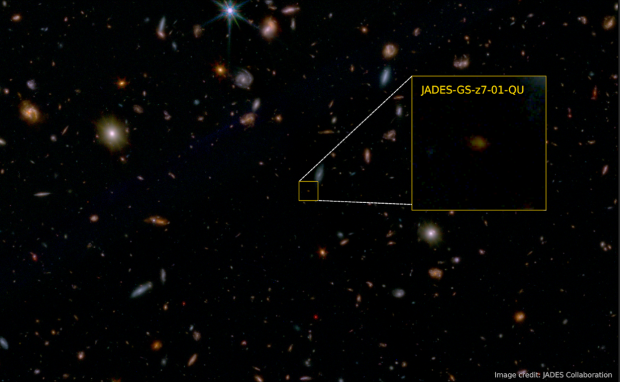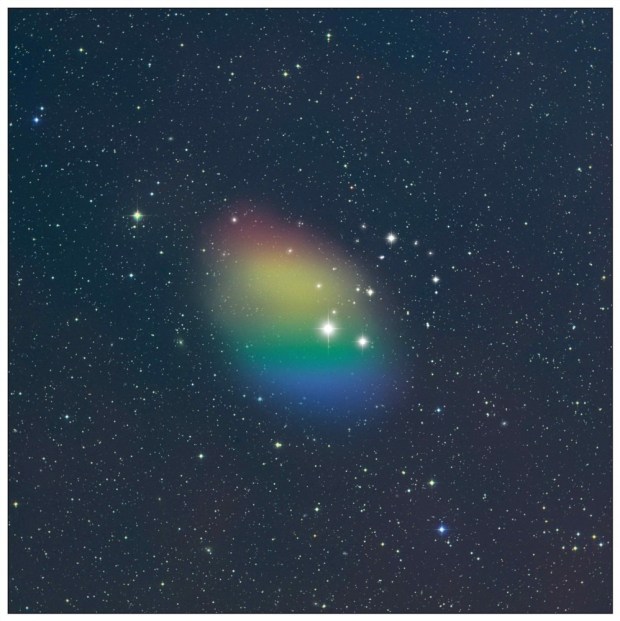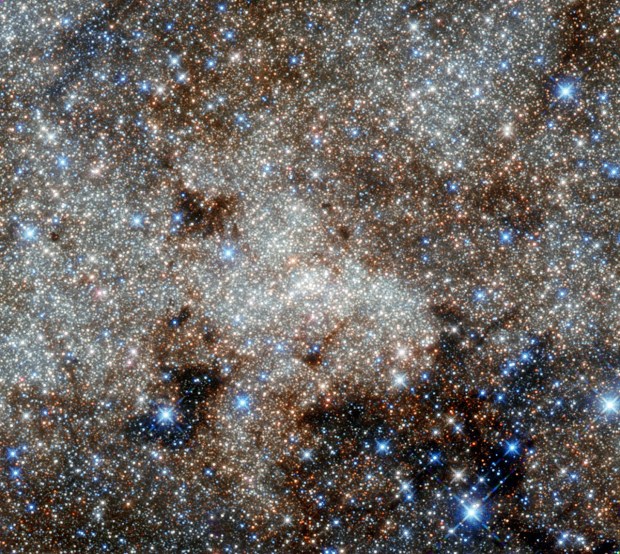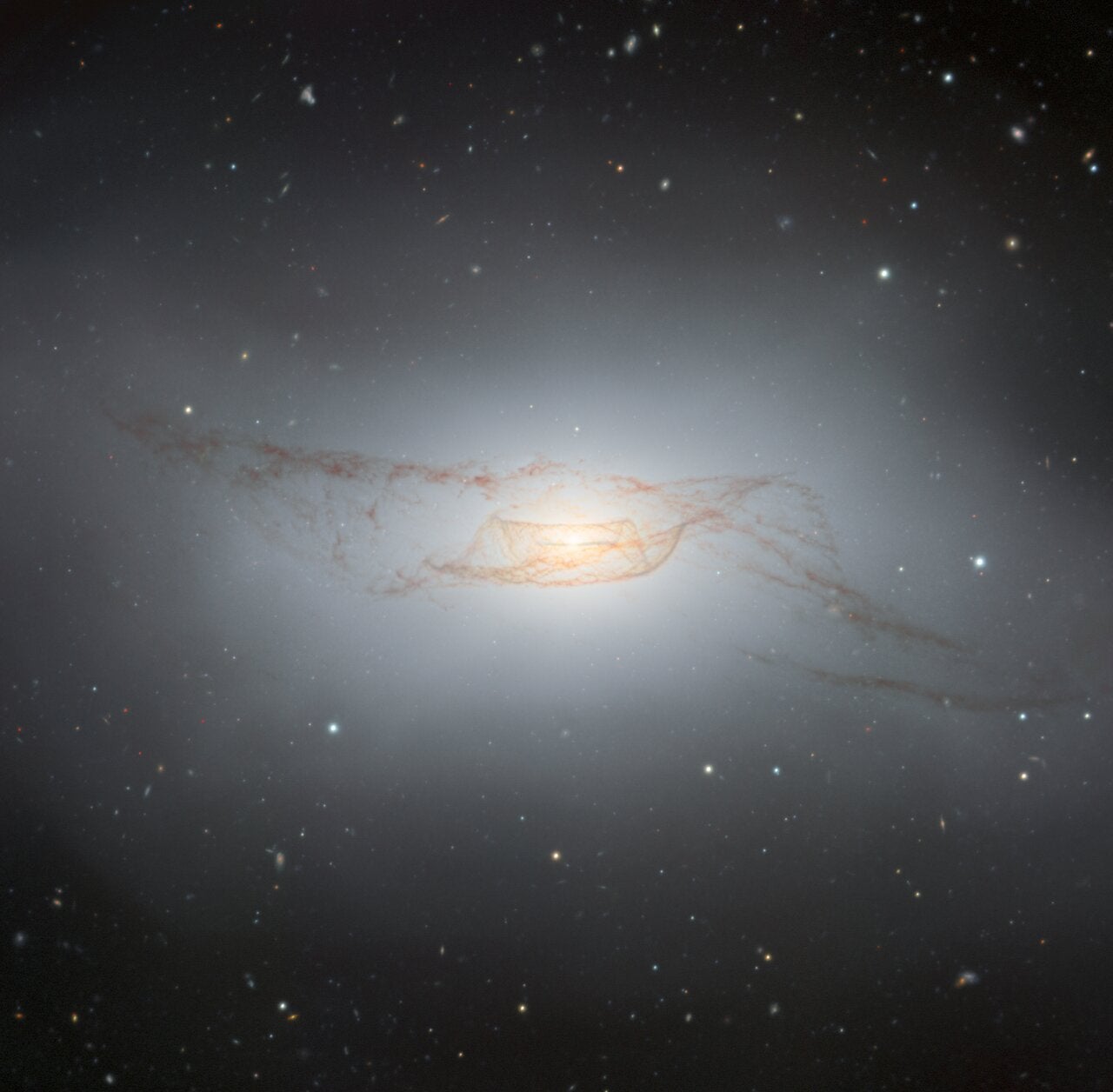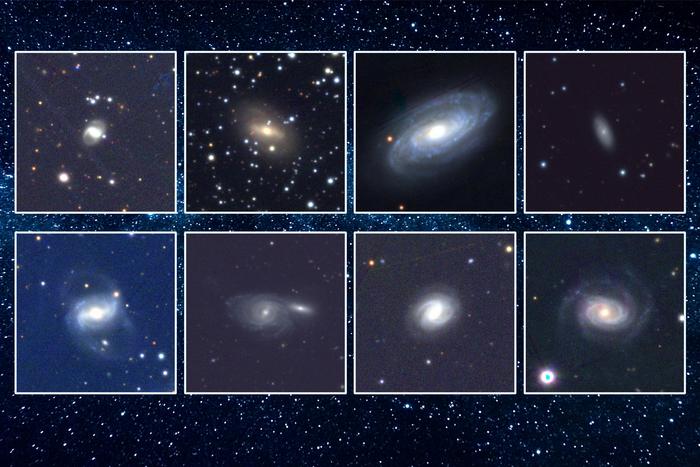Capturing the creation of this type of large short-lived star body is extremely rare — the equivalent of discovering a missing link between winged dinosaurs and early birds, said the scientists, who relied primarily on data from Keck Observatory’s NIRC2 fitted with the laser guide star adaptive optics (LGSAO) system. The new mega galaxy, dubbed HXMM01, is the brightest, most luminous, and most gas-rich submillimeter bright galaxy merger known.
HXMM01 is fading away as fast as it forms, a victim of its own cataclysmic birth. As the two parent galaxies smashed together, they gobbled up huge amounts of hydrogen, emptying that corner of the universe of the star-making gas.
“These galaxies entered a feeding frenzy that would quickly exhaust the food supply in the following hundreds of million years and lead to the new galaxy’s slow starvation for the rest of its life,” said Hai Fu from UC.
The discovery solves a riddle in understanding how giant elliptical galaxies developed quickly in the early universe and why they stopped producing stars soon after. Other astronomers have theorized that giant black holes in the heart of the galaxies blew strong winds that expelled the gas. But cosmologist Asantha Cooray, also from UC, said that they and colleagues across the globe found definitive proof that cosmic mergers and the resulting highly efficient consumption of gas for stars are causing the quick burnout.
“Finding this type of galaxy is as important as the discovery of the Archaeopteryx was in understanding dinosaurs’ evolution into birds, because they were both caught at a critical transitional phase,” Fu said.
Julie Wardlow from UC initially spotted the new galaxy, also with Cooray’s group. She noticed “an amazing bright blob” in images of the so-called cold cosmos — areas where gas and dust come together to form stars — recorded by the European Space Agency’s Herschel telescope with important contributions from NASA’s Jet Propulsion Laboratory in Pasadena, California. “Herschel captured carpets of galaxies, and this one really stood out.”
Follow-up views at a variety of wavelengths were obtained at more than a dozen ground-based observatories, particularly the W.M. Keck Observatory in Hawaii.
“The NIRC2/LGSAO image has revealed the existing stellar population of this pair of galaxies,” Fu said. “The radiation captured by Keck tells us how many stars have already been formed in the system at the observed epoch. These data told us the constituents of the galaxy pair: They are each made of half gas and half stars, which indicate they are nascent galaxies in formation.”
The NIRSPEC spectra measured the velocity difference of the two galaxies at only 200 miles per second (300 km/s), indicating that the two galaxies are soon to merge instead of just flying by each other. The spectra also show the high-velocity winds driven by the intense star formation in both galaxies, uncovering the violent environment in these galaxies.

